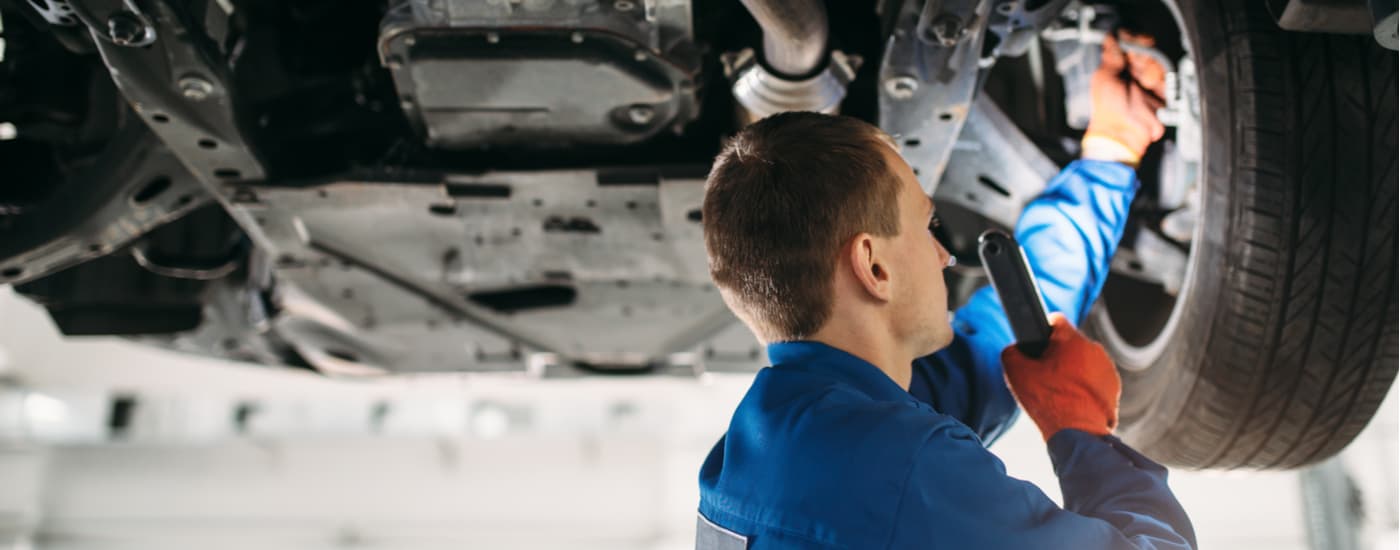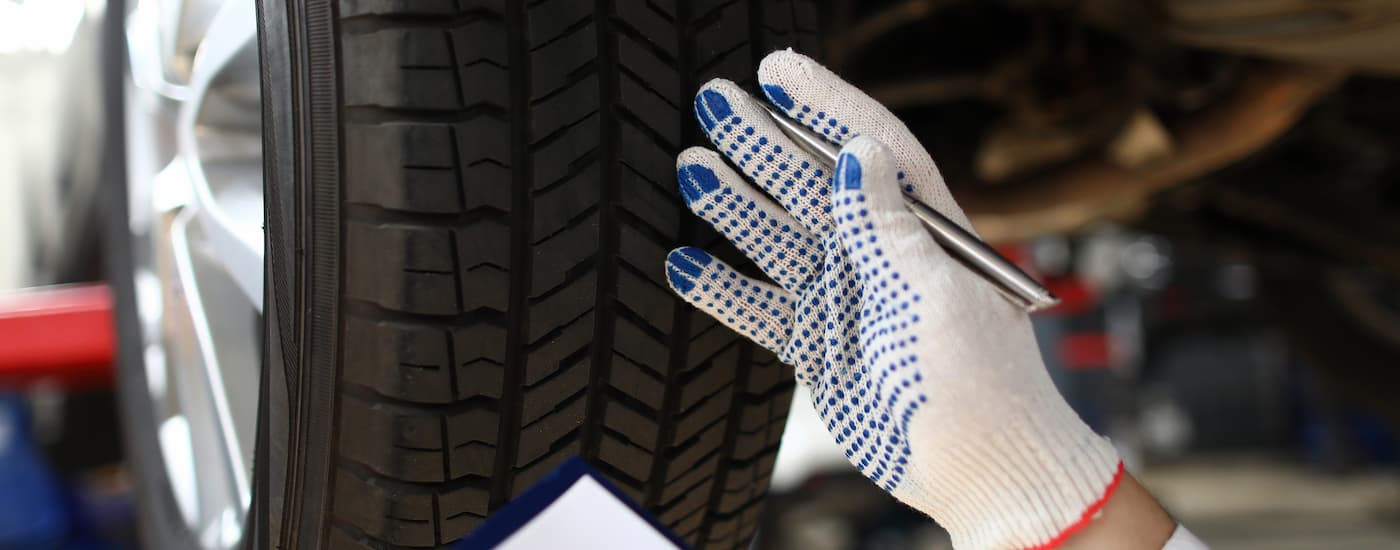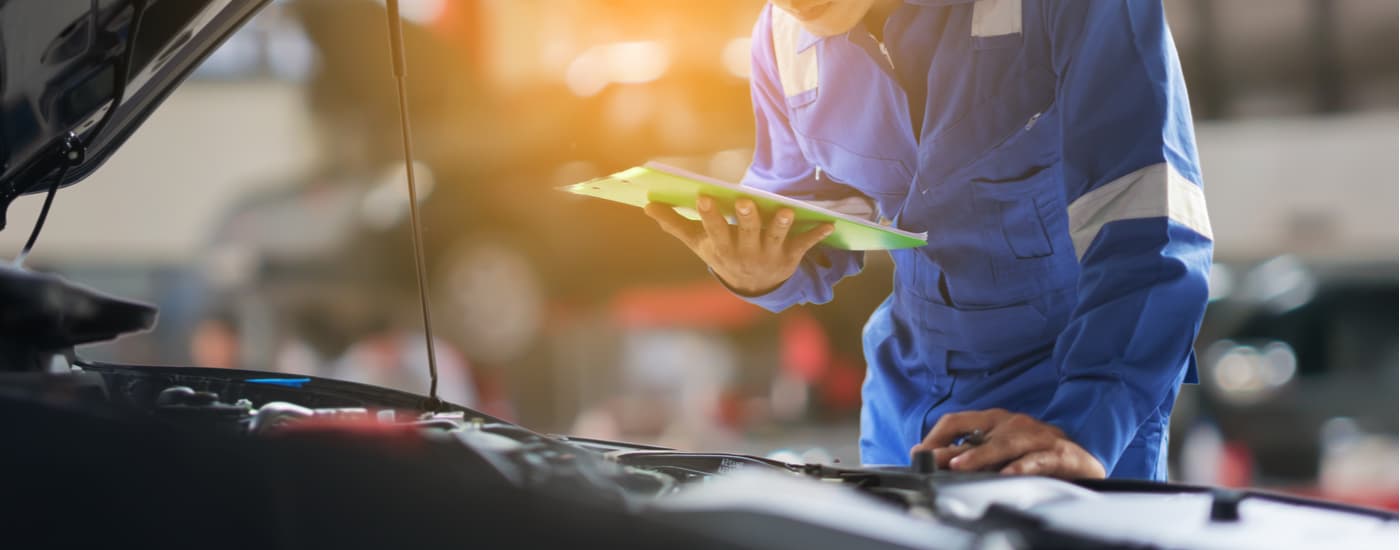Check Out Our Youtube Channel! Click Here
Multi-Point Inspection
Sometimes in life, it's better to be safe than sorry. If you were sick, you'd take yourself to the doctor, much like bringing your vehicle to a service center. Even when you aren't sick, you go to the doctor at least once a year to get an annual check-up, much like a car should undergo a multi-point inspection. Multi-point inspections are useful for a few reasons. First, a multi-point inspection ensures that everything is working as intended. Say there's an issue with your vehicle that's slowly becoming more of a nuisance, but you've been putting off taking it to the mechanic. If you wait until it's too late, it could end up being an extremely expensive repair that could have been prevented with a regular check-up. This is why multi-point inspections are crucial in maintaining your vehicle's health.
Another reason why you should get a multi-point inspection is that it's a great preventive measure you can take. Sometimes, we only know there's something wrong with our vehicles once it's too late, and then the problem goes from bad to worse. The harder the repair job, the costlier it'll be, and if you aren't covered under any form of warranty, you're in for quite the upset when you see the cost of repairs. If you get an updated multi-point inspection on your car, you can catch an issue with your car before it gets worse, and this can sometimes save you thousands of dollars in the worst possible cases.
What Is a Multi-Point Inspection?
So, what is a multi-point inspection? A multi-point inspection is the automotive equivalent of leaving no stone unturned. At Spirit Chrysler Dodge Jeep Ram, we can offer you a great deal on a multi-point inspection, which, as the name suggests, is a heavily detailed inspection. It's not a simple engine check; a true multi-point inspection checks every facet of the most necessary functions of your car.
Aside from the minutia, the main reason you should get a multi-point inspection is to ensure you won't run into any issues that could have easily been rectified if caught within an appropriate amount of time. This is because multi-point inspections mean the certified technicians at Spirit Chrysler Dodge Jeep Ram check everything you need for safe and reliable travel. Powertrains comprise of dozens of components, so the multi-point inspection will check everything that makes your car move, like the engine, transmission, steering axles, brake lines, brake pads, and more
The powertrain gets checked, but so do things like the exterior health; most notably, tire health is monitored, along with windshield wipers, lights, windows, and more. All indicators and gauges are also checked and confirmed to be working, whether that be an analog dashboard and an AM/FM radio or a digital cluster, complete with a head-up display and a modern infotainment center. Multi-point inspections will help you protect your investment and extend its longevity; both are tremendous outcomes.
What Issues Can It Prevent?
What type of issues can be prevented if you take part in a multi-point inspection? This question can be as simple as a faulty tail light or headlight or as severe as engine failure. The reason why you get a multi-point inspection is that you should always expect the unexpected when owning a vehicle, and part of owning a vehicle is watching out for your investment. Should any costly repairs arise that could have been prevented with a trip to some certified technicians, like not changing your oil and your engine stops working, your investment will be all for nothing.
The best way to be a cautious vehicle owner is to bring your vehicle in for a multi-point inspection occasionally. Without it, you may also be left with some unfortunate circumstances, from faulty brakes to broken power locks or power-adjustable seating, to name a quick few. Having a faulty blinker can also cause you to get pulled over by the police, and the last thing you need is to pay for a ticket. That's nothing compared to what else can happen if you don't get your car inspected. Besides possibilities like engine failures, multi-point inspections also include a check-in on tire health, and you must prevent possible damages like a crack in the windshield, which can quickly turn into something much worse if not dealt with promptly.
What you're ultimately preventing when getting one of these inspections is damages slowly inflicted over a long period. A prime example is suspension tuning; your vehicle's alignment gets checked because if these things aren't properly configured, the vehicle may be in some serious trouble as your components begin to wear down, and it will cost you more than it'd be worth to fix. That's one of the worst fears of a driver is their vehicle being completely decommissioned because of damages, especially if they were solely the driver's fault because of a lack of devotion to their car's health.
If There Is an Issue, Should You Immediately Follow Up
After the technicians have inspected your vehicle, it's customary that you receive a report card that details their findings. Their report may say that you need new tires, or they may find your left or right front brake pads are loosening. One of the most prominent reasons why tires may require replacing is because they've lost their tread, which is a crucial part of a multi-point inspection. The technician's report may also say that you need new fluids; transmission, brake, power steering, etc. You might also require new belts, an oil change, a new engine coolant, and a new cabin air filter. Their findings may also indicate that you need your shocks repaired; if your vehicle is a 4x4, they'll also check your front and rear locking differentials.
So, what should you do with the information you receive from the technician? You should follow up as quickly as possible, especially if the report color-codes the troublesome areas in red. If you see any parts of your vehicle the technician says require immediate attention, it's less of a recommendation and more urgent that you bring your vehicle in for repairs before more damage is done. Some components may be color-coded yellow or reported as an issue that needs future attention. You should treat these issues with a similar level of urgency, although it is true that if you keep a steady eye on these parts specifically labeled as requiring future attention by your technician, you can hold out a bit longer if you need to save money, but don't put it off for too long.








